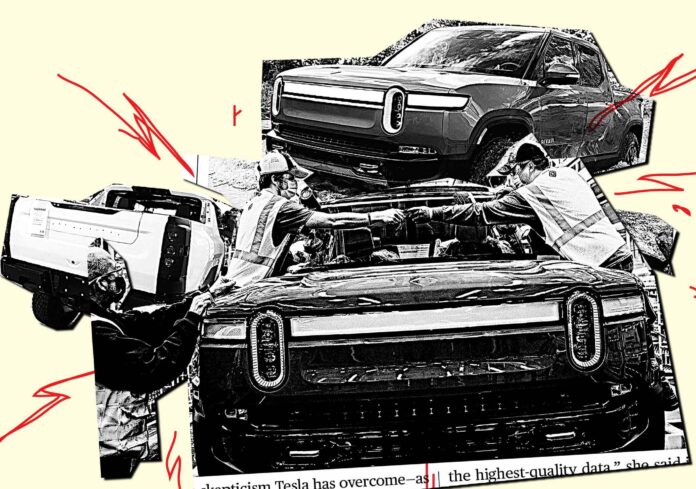MUNICH – Auto manufacturing giant BMW is forging ahead into the future of automation, announcing a new partnership with Silicon Valley robotics startup Figure this week. Together, they aim to introduce a new wave of humanoid robots into BMW’s assembly lines, a move that could transform factory floors as we know them.
It’s a bold bet on a technology that’s still in its early stages, but holds enormous promise. While robots have long handled tedious, repetitive tasks in auto plants, they’ve largely been confined to fixed stations, unable to freely navigate facilities designed for humans. New generations of robots like Figure’s aim to change that, offering human-like mobility and intelligence that could allow them to take over an ever-wider range of duties.
For BMW, the incentives are clear. Like the entire auto industry, the German manufacturer has struggled mightily with supply chain woes, labor shortages, and flagging productivity amidst the pandemic disruptions of the past three years. Investing in next-gen automation could help stabilize production and boost efficiency at a critical moment.
As manufacturing expert John Smith of Ohio State University explains, “Humanoid robots offer the ultimate flexibility. They can go anywhere humans can go in a plant, manipulate the same tools and perform the same wide range of motions. That agility could allow auto companies to reimagine assembly line configurations and work assignments in ways legacy robots never could.
Initially, BMW and Figure will spend 12-24 months identifying applications for the robots at BMW’s massive Spartanburg, South Carolina plant, its largest global production hub. The partnerships’ goal is to have Figure’s humanoids deployed there on active production lines within two years.
It’s a rapid timeline for an emerging technology, underscoring the urgency automakers feel to pursue next-gen manufacturing solutions. “The expectations are sky-high for humanoid robotics across multiple industries,” notes tech analyst Mary Lee of Forrester Research. “BMW adding its imprimatur speeds things up considerably. If the world’s leading premium auto brand says humanoids are ready for primetime in its factories, that’s going to accelerate adoption.”
A Serious Solution or Industry Hype?
But are humanoid robots really ready to shoulder such manufacturing responsibilities? The jury is still out, with some experts warning of irrational exuberance.
“There’s no question these systems have made major leaps recently, but managing the complexities of full manufacturing environments remains an enormous challenge,” cautions MIT roboticist Dr. Frank Ward. “Companies can’t just plug these robots in and expect miracles overnight. They require extensive training and close human oversight to function reliably.”
Others note that today’s most advanced humanoids still lack the dexterity, stamina and reasoning abilities of human workers. “Robots excel at repetitive point-to-point motions in controlled settings,” notes University of Michigan robotics professor Dr. Hannah Jones. “But many manufacturing tasks require complex perception, improvisation and fine motor skills that are still far beyond their capabilities.”
Jones and others worry that overeager adoption could actually backfire, overwhelming underprepared technology and creating disruptive bottlenecks. “There’s real potential here, but companies need to walk before they run,” she cautions.
BMW maintains it will take a deliberate approach. “We are under no illusions about the work required to successfully integrate humanoid robots,” says Senior Manufacturing Executive Joachim Schnabel. “This partnership is just the first step in what we see as a long-term transition to next-gen automation. We will proceed systematically and responsibly.”
The Robotic Revolution Cometh
Regardless of short-term growing pains, many analysts see humanoid robots as the inevitable next phase in manufacturing evolution. “It’s not a question of if, but how soon,” asserts Lee. “Their advantages over traditional automation are too great to ignore.”
In particular, humanoids’ human-like adaptability holds game-changing implications, allowing them to handle far more varied tasks across diverse factory environments. “Their versatility enables a dramatic consolidation of automation platforms,” explains Smith. “Rather than having armies of specialized robots, manufacturers can rely on smaller fleets of generalist humanoids. That saves costs and space while increasing operational flexibility.”
Indeed, BMW paints the partnership as part of its long-term strategy to create highly flexible “plants of the future” that can seamlessly adapt to changing market demands. Humanoid co-workers represent a key enabler.
Of course, many also point to the labor impacts of expanding humanoid adoption. “There’s no sugarcoating it: utilizing advanced robotics will inevitably eliminate some manufacturing roles,” allows Schnabel of BMW. “But it also creates opportunities. New jobs will emerge in areas like robot operations and maintenance. And boosting our competitiveness safeguards many more existing jobs. On balance, we believe automation drives growth.”
Others urge companies to take proactive steps to smooth labor transitions as robots reshape workplace dynamics. “Continuous skills training and educational partnerships will be more important than ever,” argues economist David Winston of the Brookings Institute. “If handled strategically, automation can augment human strengths rather than replace them.”
In any case, it appears the manufacturing robots of science fiction are increasingly becoming science fact. The BMW-Figure partnership represents a milestone in bringing humanoid technology to large-scale commercial use, promising major ripple effects across global industry. For better or worse, the era of robotic coworkers looks to be fast approaching.























